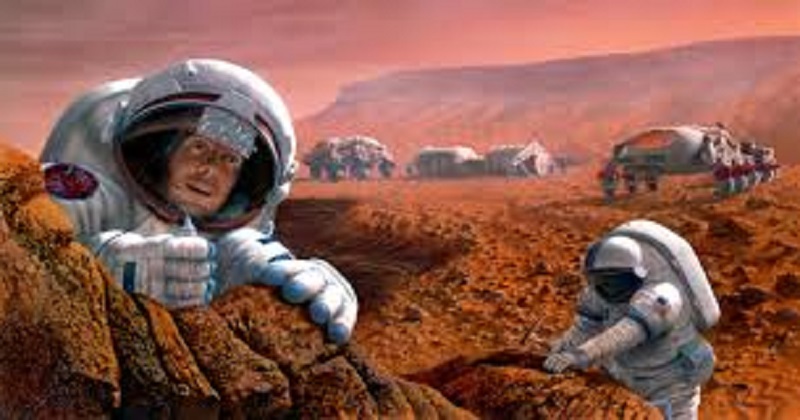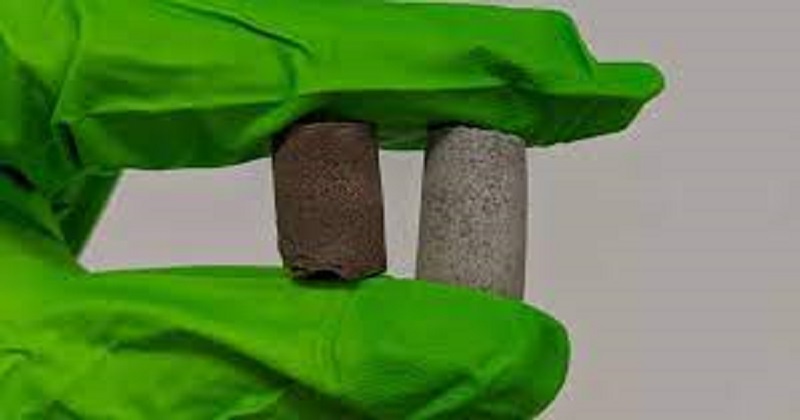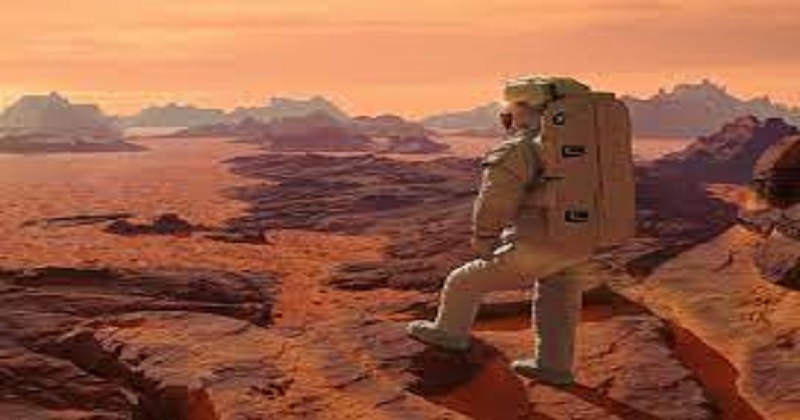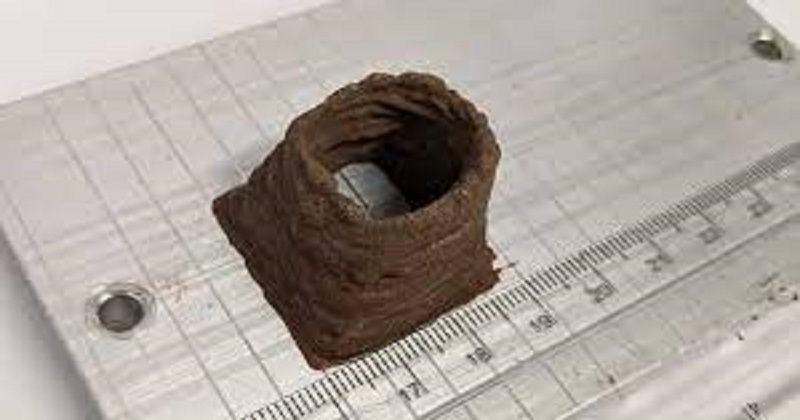
According to a report from the University of Manchester, scientists have created a concrete-like material in which astronauts’ blood, sweat, and tears are mixed with extraterrestrial dust. Setting up a colony on Mars may become easier with their advancement. Even a single brick is not cheap to transport to Mars and constructing a Martian colony would be extremely expensive.
Using a human blood protein (human serum albumin) and urea (a compound derived from urine, sweat, or tears), researchers have created a material stronger than concrete, which could be used for construction in extraterrestrial environments. AstroCrete is the name given to the novel material. Over the course of a two-year mission on Mars, a crew of six astronauts could produce over 500 kg of high-strength AstroCrete. With each subsequent mission, if AstroCrete were used as a mortar for sandbags or heat-fused regolith bricks, each crew member would be able to produce enough of it to double the amount of housing.

‘Mother spider is preserved in amber’
A Chinese researcher found a 99-million-year-old amber sample preserved an adult spider protecting its young. There are many modern spider species that take measures to ensure the survival of their offspring; females have been seen crouching to cover hatchlings, and tying eggs closely together using silk. In this study, researchers found evidence of a mother spider that exhibited the same behavior during the Cretaceous period.
Researchers discovered four pieces of amber that had been extracted from a mine in Myanmar and which contained entombed spiders. One of the chunks contained an adult female with a bit of her egg sac still attached to her body. Additionally, the researchers noted that the female was in a stance similar to that of modern female spiders who are defending their eggs from predators. The female had also used her own silk to tie the eggs together. Three other pieces of amber contained spider thread and baby spiders. There was also an arthropod leg and a wasp on one of them. Researchers say each piece of amber may contain spiderlings that are all related to one another.
Region of northern Mars – Arabia Terra
NASA confirms that the region of northern Mars known as Arabia Terra underwent thousands of super eruptions – the largest volcanic explosions ever recorded – over a 500-million-year period. There was so much dust released that it blocked out sunlight and changed the climate for decades.
Scientists found evidence for thousands of such eruptions by studying the topography and mineral composition of a portion of Arabia Terra on northern Mars. The explosions hurled water vapor, carbon dioxide, and sulphur dioxide into the air about 4 billion years ago, tearing through the surface of Mars. It is likely that the eruptive gas led to a change in the climate – perhaps the thickening of the atmosphere or the blocking of the Sun resulted in a cooler atmosphere in the years following. Arab Terra could teach scientists something about how planets and moons are shaped by geological processes.

Ancient artwork discovered on the Tibetan Plateau
Researchers have discovered what may be the world’s oldest work of art – a sequence of handprints and footprints on the Tibetan Plateau. These prints date back between 169,000 and 226,000 years ago, making them three to four times older than the famous cave paintings in Indonesia, France and Spain.
In 2018, a team of researchers examined an ‘art-panel’ that was discovered on a rocky promontory at Quesang on the Tibetan Plateau. A series of five handprints and five symmetrical footprints were imprinted in travertine, a freshwater limestone deposited by a nearby hot spring and hardened over time. As this would have been a slippery, sloped surface, it is unlikely that people would attempt to cross it. It does not appear that someone fell on the stone by accident.

In addition to handprints, the panel hints at being an artwork. The oldest known examples are stencils of hands from Indonesia and Spain, found in caves in El Castillo and Sulawesi. Chauvet cave paintings are approximately 30,000 years old, comparable to the Tibet discovery. To determine when the art-panel was created, researchers used uranium series dating. They estimate the child who made the footprints was around 7 years old, while the child who made the handprints was about 12 years old.
Read more: Hindu Mahasabha Leader arrested for making ‘death threats’ to CM
The ozone hole is larger than usual
Copernicus Atmosphere Monitoring Service researchers report that it is ‘rather larger than usual’ this year, and is larger than Antarctica. Since 1979, more than 75 percent of ozone holes at this time of year have been larger than this year’s hole.
In the stratosphere, there is a layer of ozone with a high concentration. UV radiation harms the planet. However, in the southern hemisphere winters, there is a hole that forms every year. Depletion is caused by the presence of human-made chemicals as well as by sunlight. Since 1979, the 2021 ozone hole has ranked among the largest 25 percent of ozone holes.

Post Your Comments